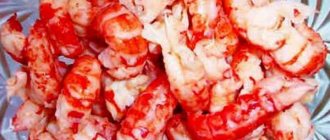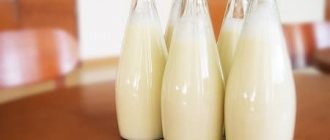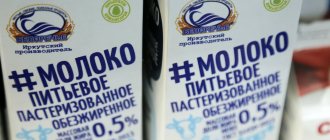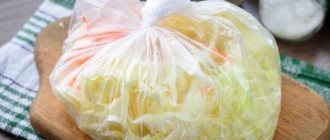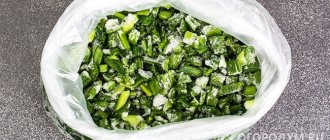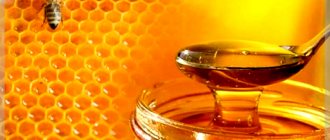Honey is a natural product that can not only strengthen the immune system, but also improve health in the shortest possible time, eliminating a number of diseases and ailments. As is known, at high temperatures its chemical compounds and microelements react and begin to break down, as a result of which the beneficial properties are partially or completely lost. But what happens if you freeze honey or, for example, put it in a refrigerator?
As a rule, lovers of the sweet bee delicacy are divided into two categories: those who keep it in a dark place like a pantry, and those who prefer to put it in the refrigerator. Let's figure out which storage method is most preferable. After all, the shelf life of the product depends on the chosen conditions.
To understand whether honey can be kept in the refrigerator, you need to analyze the conditions of the hive. In preparation for winter, bees insulate their houses with beebread and propolis. In addition, they live in large swarms, which allows them to maintain positive temperatures inside. Therefore, insects tolerate even severe cold well.
The optimal internal mode is from 4 to 15 degrees. This is the temperature that can be maintained in a bee hive.
Consequently, the answer to the question whether it is possible to store honey in the cold is strictly defined: no, it is not possible. It is best to keep the treasured delicacy in dark places: a pantry, a tightly closed closet, or in a non-residential and poorly lit part of the house. At the same time, storing honey in the refrigerator is still acceptable, but requires taking into account a number of additional factors.
Choosing suitable conditions
Surprisingly, honey in honeycombs has no expiration date. The product can sit in bee hives for hundreds of years without spoiling. Of course, when it is removed from the honeycomb, it loses this property. At home, a sweet delicacy can retain its original qualities for one to two years.
Place
The storage location for honey must meet certain criteria. In winter, it is unacceptable to keep the product on the balcony or in a cold corridor, otherwise it will suddenly become unusable. It is also not advisable to store the treat in a heated room, otherwise it will lose many of its beneficial properties.
Suitable temperature
If the optimal temperature regime is not observed, honey quickly deteriorates. If the ambient temperature drops below -20 degrees, it hardens and crystallizes. If the room temperature exceeds +20 degrees, it loses its structure and nutrients. The optimal storage temperature is from -5 to +10 degrees.
Humidity level
Make sure that the humidity level in the storage area does not exceed 60%. Honey has hygroscopic properties, so it actively absorbs moisture from the air. A room that is too damp is not suitable for storage.
Foreign odors
It is not advisable to keep containers with honey near strong-smelling foods and substances. Pesticides, flammable and caustic substances can affect the taste of honey even in a short time. So do fish, vegetables with a strong smell, spices, bananas or vinegar.
Effect of light
Honey should not be exposed to light, be it the rays of the sun or diffuse lighting. The fact is that light triggers certain chemical processes in the molecules of a substance, as a result of which enzymes and other useful components are destroyed. Be sure to keep the jar of treats in a dark place, otherwise they will spoil in just a few days.
Correct temperature
The optimal temperature to preserve the benefits of liquid amber is the one present in the hive. It is with this that the product lasts the longest. The ideal temperature for storing honey is 5–20 degrees above zero.
If it increases even a little, the honey may darken and begin to taste bitter, and all the vitamins in the product will be completely destroyed. If you have to store honey, it is best to do this in the cellar in a wooden tub with a lid or in a clay pot. This way it can stand for a long time without changing its properties. If you do not have a basement, then you can store the product in a room, but it should be maintained at an optimal temperature. But still, even in an apartment, you need to put a vessel with honey in a dark closet or drawer .
How to choose containers for storing honey
Since honey is a rather delicate product, your main task is to ensure the tightness of the container. Otherwise, it will absorb unpleasant odors and suddenly deteriorate under the influence of certain factors. Before spilling, ensure that the container is thoroughly washed and dried. Do not mix several types of honey in one jar, especially if they were pumped at different times, otherwise it will ferment.
Clay pot
It is believed that honey can sit in a clay pot for years without spoiling. The fact is that clay does not have the ability to react with the product, does not oxidize and does not deteriorate over time. If you decide to keep honey in a clay pot, be sure to ensure that the container is always tightly closed with a lid.
Glass containers
The most popular container for storing honey is a glass jar. The material is not able to react with products and does not release harmful components into their composition. If you decide to keep honey in a jar, place it only in a dark place, since glass allows light to pass through. Also make sure that the glass container is tightly closed, otherwise the product will absorb other odors or excess moisture.
Dark glass bottles, such as beer bottles, are ideal for storage as they will not allow sunlight to pass through.
Plastic containers
As you know, plastic, especially cheap plastic, can react with the products stored in it. This also applies to honey. The maximum time during which honey will remain in plastic and not deteriorate is one year, taking into account that high-quality certified containers will be selected. Containers not intended for food products are absolutely not suitable for storage, since honey immediately reacts with oxidation with the material.
Wooden containers
If you want to store the product in a wooden barrel, make sure that it is made from certain types of wood. Containers made from coniferous trees are absolutely not suitable for storage, as they have a strong odor that can saturate the product. The best option is a barrel made of willow, alder, birch or linden.
Metal containers
Some housewives use metal containers to store honey, for example, tin cans with a varnished interior or cans made of sheet steel. Since any metal can react over time, use this storage method only as a last resort.
Stainless steel dishes
It is convenient to keep honey in stainless steel containers. To ensure that the product retains its taste and benefits, study the components included in the alloy of the container. If it contains lead, copper or zinc, do not risk storing honey in this container. Even after a short period of time, such substances oxidize and spoil the product.
Aluminum flask
Aluminum containers are absolutely not suitable for storage. The most you can do is pour the treat into an aluminum flask for transportation, and then choose a more suitable container. During long-term storage in such containers, oxidative reactions begin, and the honey becomes saturated with the taste of aluminum.
What cannot be stored in
Since honey contains certain acids that can react with various substances, not all containers are suitable for storage. As a result, toxic substances may form in the product. It is strictly not recommended to use containers made of lead, copper or zinc. In addition, it is forbidden to keep treats in iron containers, since its components react with the metal, which causes corrosion of the material. Such storage usually ends with honey developing a metallic taste and an unpleasant odor.
Storage Features
Honey, thanks to its unique and complex chemical composition, does not spoil for a long time; pathogenic microorganisms do not survive in it. But, if storage conditions are violated, the beekeeping product may lose its healing qualities, vitamins and microelements in its composition. Not everyone knows how to properly store jars of honey, and they leave them in the kitchen at high humidity and air temperature, often in containers with a loose lid.
Honey does not spoil for a long time
Additional Information. Improper storage destroys the enzymes in honey, impairs its taste, and makes the product useless.
Storage conditions:
- Tightness. One of the most important storage conditions is a tightly sealed glass container.
- Illumination. Honey should be stored in a dark place. You should not leave jars in the apartment: on the kitchen table or windowsill. When direct sunlight hits a bee product, especially if it is in a transparent container, its medicinal and nutritional value is significantly reduced. For a product stored in a dark container, it is also undesirable to remain in a strongly lit place for a long time, mainly due to the risk of overheating. Stray light entering a cabinet with a glass insert also has a negative effect on the antimicrobial properties of the product.
- Humidity. Honey is able to absorb moisture from the environment. Therefore, in order to best preserve the beneficial qualities of the product, choose a dry place with an optimal humidity of about 60%. The ability to be hygroscopic, especially in rooms with high humidity, causes dilution of the consistency of the product and its deterioration. The room should be well ventilated to prevent mustiness; this will also determine how long the honey is stored.
The main thing is storage conditions
Interesting. Honey with the lowest moisture content belongs to the highest category.
- Smells. Honey easily absorbs odors, so it is not recommended to keep it near spices, garlic or onions, pickles and other odorous substances, such as gasoline or paints. Also, you should not place jars next to bulk products such as flour - due to the sticky consistency of honey, flour particles can settle on its surface, causing fermentation. The smells of tobacco or smoke can penetrate into the composition of the nectar.
- Temperature. Healthy sweets are kept only in a cool place. At temperatures above +20C°, the beekeeping product loses its healing qualities and turns into an ordinary sweet mass, so you should not store it in cabinets near the stove or a heated radiator.
Where to store honey
A small portion of high-quality honey can easily stand in a closed kitchen cabinet, away from the stove and heating appliances. Before storing large volumes of product, select more suitable conditions.
Cellar storage
It is convenient to keep honey in a cellar or basement. Here the temperature regime is fully observed, there is no sunlight. The only drawback of such storage is the increased level of humidity. It’s good if an air conditioning system is installed in the cellar. If it is not there, to prevent the product from absorbing excess moisture, close the container as tightly as possible. You can strengthen the tightness by lubricating the junction of the lid with the container with wax.
In a refrigerator
The refrigerator is a suitable place to store honey. Here the temperature regime is fully observed, the humidity level is consistent and there is no light. The main rule for storing treats in the refrigerator is that the container must be tightly closed, otherwise the product will absorb extraneous odors from food lying nearby.
Also consider the model of the refrigerator. If the device is equipped with a dry freezing function, there will be no problems, but other, more outdated modifications can produce excess moisture, which settles on the walls of the device and negatively affects the quality of honey. To prevent this, regularly wipe the walls from moisture.
In the freezer
Since honey begins to lose quality at temperatures below -20 degrees, and the standard temperature of freezers is -18 °C, storing it in the freezer is acceptable. However, do not be surprised that even during a short period of storage in the freezer, the delicacy crystallizes. For convenience, package the product in small portion containers. The main thing is to make sure that the lids of the containers are tightly closed. Never defrost honey in a microwave oven or on the stove, as it cannot withstand high temperatures. It is better to place the container in the room or heat it slightly in a water bath.
Is it possible to freeze honey with berries?
You can make a healthy and tasty preparation for the winter by pouring honey over seasonal berries and freezing them. This way the fruit will remain of the same quality as before freezing, will retain freshness and will not spoil for a long time.
Is it possible to freeze sea cucumbers with honey?
It is believed that sea cucumber (trepang) with honey is endowed with the maximum number of healing properties. The product is used both as a food additive and as a substance for external use. The most suitable place to store the product would be the refrigerator, but not the freezer, since the product retains its medicinal qualities at a temperature of 1–6 degrees.
Is it possible to freeze honeycombs with honey?
Methods for storing honey in honeycombs are completely the same as methods for storing liquid honey. Honeycombs cannot withstand low temperatures and lose quality, so you can keep them in the freezer. A separate issue is packaging for honeycombs, which should be as airtight as possible, since honeycombs absorb moisture and odors to a greater extent than the product in liquid form. For convenience, freeze the treat in portions, so you can get the necessary part for consumption. Please note that the honeycombs cannot be heated. To defrost a portion, place it on the refrigerator shelf.
Raw and pasteurized honey
Pasteurization is the process of heating honey to high temperatures, typically 145°F or higher, to kill any microorganisms or bacteria that may be trying to live in the honey. Most of the honey you find in stores is pasteurized, as some consider it safer.
Many critics simply suggest that pasteurization gives producers a better opportunity to dilute pure honey with corn syrup, sugar or other additives, which reduces its cost to produce but also affects the honey's natural nutritional value.
Raw honey, as you can imagine, is the most natural, raw form of liquid that is extracted from the honeycomb. It is unrefined and may even contain particles from the hive, such as pieces of wax or the comb itself.
How to store different types of honey
Depending on the variety, storage conditions may vary slightly. This is due to the fact that different types of honey have different compositions.
Buckwheat
One of the high-grade species, which is produced from buckwheat flowers during its flowering period. It has a delicate unique taste, dark brown tint. It remains in liquid form for only one month, and then begins to crystallize. If you store the product incorrectly, the beneficial and taste qualities will be lost. To prevent this from happening, keep the container with buckwheat honey closed and away from moisture and sunlight. The optimal temperature is from -5 to +20 degrees.
From white acacia
White acacia delicacy is widely appreciated for its unique taste with a slight sourness. In liquid form, white acacia honey has a light yellowish tint, and after crystallization it turns white. The peculiarity of the variety is that the product can remain in liquid form for approximately 12 months if storage standards are observed. To ensure these, keep it only in a closed container, in a dark place with a relative humidity of no more than 60%. If the room is dry enough, the product will remain of high quality at any room temperature. But if the humidity is much higher, the temperature should not exceed +10 degrees.
From dandelions
The peculiarity of the variety is that it is quite difficult to find in its pure form. The fact is that if there are other flowers, then the bees do not collect nectar from the dandelions. Since such a phenomenon is rare in nature, dandelion honey is also an infrequent occurrence. Resourceful housewives make their own honey from dandelions by boiling the flowers in sugar syrup. If you become the owner of such a product, store it in suitable conditions: in a cool, dark place, placing it in an airtight container. Keep your homemade treat in your kitchen cabinet or refrigerator.
Rapeseed
The sweetest variety, which was previously used only to support the life of bees. It looks like a thick, cloudy, white mass that crystallizes quite quickly. The best container for storage would be a wooden container with an airtight lid. You can preserve the quality of the product for a long time if you keep the container with the treat in a dark place with an air temperature of up to +15 degrees.
With royal jelly
Honey with royal jelly is a unique and rare product. It is prepared by beekeepers by mixing honey with milk from two or three-day old queen cells. After preparation, the product is immediately packaged in containers and placed in a dry, dark place with an air temperature not exceeding +10 degrees.
With beebread
Bee bread is flower pollen transformed by the action of lactic acid. The product is considered incredibly useful. Beebread honey is also unique in that it is quite difficult to fake. The main criteria for storing such a product are the absence of humidity and light. The best temperature for storage is from +1 to +25 degrees.
With radish
Fans of traditional medicine claim that honey with radish effectively fights coughs and colds. Since preparing the medicine is not difficult, it is recommended to make fresh portions of the product as needed, and not in reserve. In the refrigerator, honey with radish will remain of high quality for 48–72 hours, the main thing is to close the container with a tight lid. At room temperature, honey with radish will last only 10 hours. At the same time, do not close the jar of medicine tightly; it is better to cover the container with gauze folded in 3-4 layers. Keep the container with the product in a place deprived of light.
With nuts
The healthy and tasty sweet is especially appreciated by fans of healthy eating. Preparing the mixture is very simple - just pour fresh honey over the peeled nuts. Be sure to keep the treat container tightly closed. The best place for storage would be the refrigerator, since the appropriate temperature and humidity are fully observed here, and there is no light.
With aloe
In this embodiment, honey acts as a preservative. The medicinal substance will retain its beneficial qualities for six months if it is kept in a dark glass bottle placed in a cool place.
Chestnut
This variety has a bactericidal effect and is highly valued as an immunostimulating substance. It is rare due to the natural characteristics of planting chestnuts. The product has a bitter taste, with a slight woody aftertaste, and the color is dark chestnut. The variety can remain unsugared for a long time. If you become the happy owner of chestnut honey, take care of its proper preservation: keep it only in a sealed container in a cool, dark place.
Lime
A popular and beloved variety by many, which has a lot of healing properties. It contains the maximum of its qualities in the first year of storage. For proper preservation, choose containers made of glass, clay or ceramics with an airtight lid. In the first six months, when the honey has not yet been candied, keep it at a temperature of +14-+18 degrees, and after crystallization - at a temperature of +5-+6 degrees. Always make sure that the jar of honey is not exposed to light and that the humidity level in the room does not exceed 60%.
With propolis
This is a unique remedy that is used in both traditional and folk medicine. Usually linden or flower varieties are mixed with propolis. It is better to keep it in a glass container in a cool, dark place, for example, in a refrigerator.
Pine
The components of pine honey include substances that promote health and protective functions of the body, as well as elements that regulate metabolism. It is not produced by bees, but by humans. There are many recipes for making pine honey: from cones, from needles, from pollen, from buds. Homemade pine syrup is slightly different in appearance from regular syrup, as it has a dark brown tint. In terms of taste characteristics, it is much bitterer than the traditional product. Optimal storage conditions are dark and cool. For these standards, a refrigerator is ideally suited, on the shelf of which the medicine will remain for at least a year.
Cream honey
Cream honey is finely crystallized honey. The structure resembles chocolate paste or butter. It is prepared by mechanically stirring a fresh but already candied product. Store the treat in a cool place, away from light, in a tightly closed container.
Fireweed
Fireweed honey is made from the nectar of the Ivan-tea herb. It has a lot of useful and healing qualities. The product has a very delicate taste and delicious aroma. The variety is slightly different from other species in its light green tint and rapid crystallization, after which it becomes light white. It is used both for consumption and for external application to the skin. To ensure that the treat retains its properties for 12 months, keep it in a glass jar with a tight lid on the refrigerator shelf. If the shelf life is more than a year, it is not recommended to eat the product, but using it for cosmetic purposes is quite acceptable.
Flower honey is made from
Some of the most popular honeys come from the flowers:
- Clover is a bountiful flower that's often considered a weed, so it makes sense that it's also a bountiful variety of honey that you'll often find in cream.
- Alfalfa – Also sometimes called alfalfa honey, this is a very common form of honey and is often called a prebiotic, which is not common to all types of honey.
- Sage, Lavender, Rosemary are all separate types of honey, but they are all herbs that you are probably familiar with, and the honey made from the nectar of each has a hint of the flavor we are used to cooking with. , but inside there is a delicate sweet profile
- Eucalyptus – Primarily from Australia, this variety of honey is well known for being highly supportive of a healthy immune system.
- Manuka - Imported from New Zealand, this honey is renowned for its exceptional antibacterial, antiviral and anti-inflammatory properties.
- Acacia is one of the lightest and clearest varieties of honey in the world, as well as one of the sweetest in taste.
- Buckwheat – If you find the Canadian variety of this honey, be sure to grab a few containers, as recent studies have shown that its health superpowers include defeating certain drug-resistant strains of bacteria.
- Jamun - This type of honey is commonly used as a topical remedy for fast healing of wounds, even for the successful treatment of gangrene.
This is not an exhaustive list, but these are the types of honey you are most likely to be able to get your hands on. Remember that honey made from individual flowers is often used as a medicine, which should give you something to think about the next time you accidentally cut yourself.
How to properly store honey in honeycombs
OLYMPUS DIGITAL CAMERA
Honey will be stored as close to natural conditions as possible if it remains directly in the honeycomb. This storage method is also good because in addition to the beneficial properties of honey, you can also consume the natural substances contained in the honeycombs.
Proper storage includes the following criteria:
- optimal temperature at the storage location is from +3 to +10 degrees;
- absence of foreign odors;
- suitable humidity level not exceeding 60%.
It is convenient to keep honey in honeycombs in a cool, dark place, wrapped in cling film. It has been proven that honey remains liquid in this form for up to 12 months.
How long can honey last?
Over time, honey loses its benefits and becomes just a sweet mass. To get the maximum of useful components, keep the product in proper conditions and do not use it after the prescribed date.
How long can natural honey be stored?
Experienced beekeepers claim that honey can be stored for at least 10 years if stored in a hive or honeycomb. However, if the product has already been pumped out, it will retain its beneficial properties for 12 months. Afterwards, it will begin to lose unique enzymes and microelements. Since honey is a food product, its shelf life is regulated by the state, namely GOST 19792-2017. The document indicates a period of 8 to 12 months, depending on storage conditions.
How long does honey last at room temperature?
If you keep a jar of honey in a dark kitchen cabinet, away from the stove and heaters, it will retain its quality for 8-12 months. If the room is too hot (more than +20 degrees), the product will become bitter and lose most of its nutrients.
How long does honey with nuts last?
Honey with nuts can last for a very long time, but after a year of such storage it will no longer be beneficial. If the proper conditions are met, it will indeed last in a closed package, without losing its quality, for a year. If the container is opened, the shelf life is reduced to 6 months.
How long can honey and garlic be stored?
At room temperature, such a product will last no more than ten days. If you put a bottle of honey-garlic mixture in the refrigerator, the medicine will retain its qualities for 2-3 months.
How long can sea cucumber be stored on honey?
An infusion of sea cucumber with honey has a lot of useful properties and is actively used in folk and oriental medicine. The best place to store the medicine is the refrigerator, since only here the necessary conditions can be maintained. If you follow the standards, sea cucumber with honey will last on the refrigerator shelf for 3-4 weeks. This period is sufficient if you use the product regularly for medicinal purposes.
How long can honey with propolis be stored?
If the correct storage conditions are observed, the medicine will not lose its healing properties for 1 year.
How long to store honey with radish
Honey with radish juice is actively used in folk medicine against coughs and colds. It is better to prepare such medicine for future use, for a maximum of 2-3 days. In this case, you only need to keep the product in the refrigerator in a closed container. If you leave the medicine at room temperature, it will not lose its beneficial properties for ten hours.
How long does May honey last?
May varieties are especially valued by many because they are collected from the first flowers. The product contains a huge amount of useful macro and microelements, as well as enzymes and vitamins. Honey does not crystallize for a long time. If you bought a treat from beekeepers, it will not lose its properties within one year. A candied or store-bought product can last at least two years in a kitchen cupboard.
Storage space
Where is the best place to store honey?
The duration of the presence of healing substances and microelements in the product depends on the storage location.
What is better for storage in the refrigerator or pantry? Honey can be stored in the refrigerator, in a compartment with a temperature of +5C°, for example, on the door. But changes in humidity present in the refrigerator, periodic illumination and various strong odors from other products can complicate storage. True, in conditions of elevated room temperature, without the possibility of adjusting it, the refrigerator becomes the only place and way to properly store containers of honey, provided that containers with an airtight lid are used. It is also acceptable to keep sweet amber in cabinets on cool loggias.
Do not change storage locations frequently
Important! Temperature changes negatively affect the quality, color and smell of honey.
You should not frequently change storage locations, moving jars from the refrigerator to rooms at room temperature, including to prevent condensation.
Is it possible to freeze jars of honey?
Honey can be frozen in the freezer at a temperature not lower than -20C°. But this method does not affect the shelf life and makes it difficult to remove the product from the container after being at a low temperature. Therefore, for such storage you should choose small containers, taking into account that when frozen, the mass of the liquid will increase. Therefore, the bee product is not poured into the container to the brim, leaving space at the top. Thaw honey without removing the lid at room temperature.
You should know! Staying in the freezer may degrade the taste of the product.
Storage temperature
The best temperature for storing jars of honey is from -5C° to +20C°, which is lower than normal room temperature. Therefore, a dark pantry with a constant temperature that does not rise above +20C° will be the best storage option. Reduced temperatures for natural sweetness are less dangerous than elevated ones, at which vitamins are destroyed.
A dark pantry with a constant temperature is the best place for storage.
Shelf life of honey depending on container
If the storage container is chosen correctly, in most cases, honey retains its properties for the same period in containers made of different materials. These can be glass or plastic jars, clay pots or wooden barrels. The main thing is that the lid of the container is tightly closed and prevents moisture and air from entering. However, the state standard determines shelf life, which depends on the container. For example:
- in containers of 25 kg or more – 8 months;
- in sealed containers made of glass or polymers – 1 year;
- in unsealed closed containers - no more than eight months;
- in paraffin paper glasses – maximum six months.
Basic Rules
First you need to choose the optimal heating method. Next, you need to separate the part of the product that you plan to use in the near future. It is better to leave the remaining nectar for storage.
During the recrystallization process, certain rules should be followed, namely:
- the product cannot be heated more than 40°C;
- It is not allowed to mix different types of honey;
- you need to make sure that no water gets into the nectar;
- The sweetness should be heated in small portions.
Glass containers are best for melting honey. This could be a glass jar or bottle. You can also use ceramic or enamel dishes for the process of decrystallization of bee sweetness. The specific choice will depend on which reheating method is chosen.
Important! Dishes made of plastic are not recommended.
If you need to melt candied honey so that it retains its beneficial properties, you must adhere to the following rules:
- The bee product is much easier to melt if you use a small amount of it. The required portion should be put into the jar, and the rest should be put aside until next time.
- Glucose crystals usually dissolve at 40 degrees. The mass is heated to this temperature or a little hotter, but it should not be higher than 50 degrees, since in this case the aroma and bactericidal properties are lost. Heating above 60 degrees reduces enzyme activity, and at 80 degrees fructose is destroyed.
- Honey has low thermal conductivity, and to speed up the process, you should periodically stir the melted mass.
- During the process, there is no need to ensure that the honey mass becomes transparent and looks like fresh. It is enough to soften it to such a state that you can pour it.
- After the process is completed, the container with the heated product must be quickly cooled.
Adviсe
There is no need to worry in advance if the structure of the honey has changed over time. More often, such changes do not affect the taste and benefits of the product.
How to keep honey liquid?
Most of us mistakenly believe that liquid honey is the healthiest and most delicious. Of course, a freshly harvested product is always a liquid, light and transparent substance that has the maximum number of healing properties. However, over time, a natural process begins to occur in the structure of natural honey - crystallization. Any quality honey becomes hard and candied after about 4-6 months of storage.
To enjoy the aromatic delicacy in liquid form in winter, do not try to preserve its original texture. It is better to melt the required portion in a water bath. At the same time, do not neglect the heating temperature. Honey will become liquid even at a temperature of +40 degrees. If this indicator is exceeded, the product will lose its properties or even turn into poison.
Why does honey separate during storage?
If the honey separates during storage, it means that it was collected too early and its composition is dominated by water molecules. The quality and taste of the product remains unchanged after this.
Why is honey not candied?
If honey remains liquid for a long time and the crystallization process does not begin, then this means that this is an unnatural product. Impurities and additives were included in the composition of such honey during the production process. If you want to buy a quality product in winter, pay attention only to the candied varieties.
Why does honey foam?
If you notice foam on the surface of the honey, it means the product has fermented. If a substance that closely resembles soap suds appears on the surface, do not consume it, as you may be poisoned. Of course, foam can appear without consequences, for example, it consists of pollen or air that got into the liquid during transfusion. Unlike fermented delicacies, honey with such foam will not change its taste and smell, and will also retain its beneficial properties.
Honey remains at its most beneficial for one year. Under correctly selected conditions, during this time the product will not lose its beneficial properties and will retain its original taste and aroma. If you have had the delicacy for more than two years, most likely the product no longer contains the necessary enzymes and microelements, and the honey itself is just a thick, sweet mass.
What happens to the product when frozen
Both at too high and too low temperatures, flower nectar loses its beneficial and medicinal properties.
Expert opinion
Zarechny Maxim Valerievich
Agronomist with 12 years of experience. Our best country expert.
Ask a Question
When the minus indicator is correctly set, the processes that cause the crystallization of sweetness are suspended. But due to the moisture contained in the healing delicacy, honey acquires a solid consistency. After removing the nectar from the freezer, the delicacy remains viscous and plastic, and the chemical composition of the unique bee gift is not disturbed.

